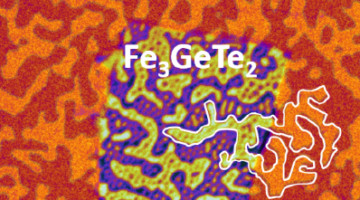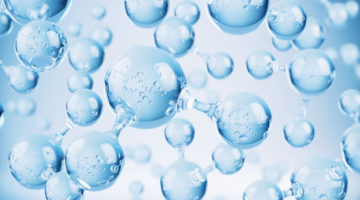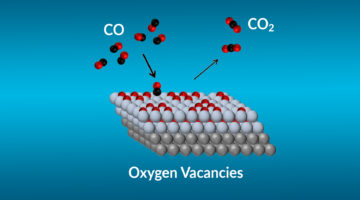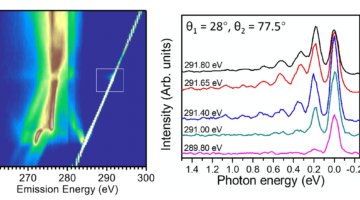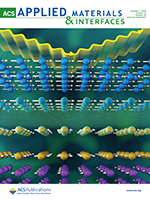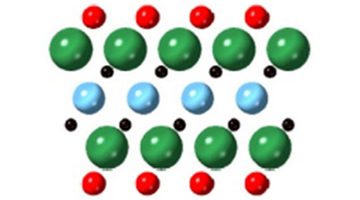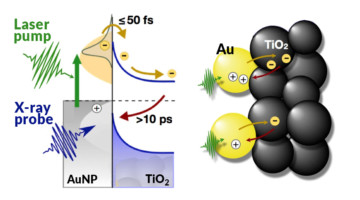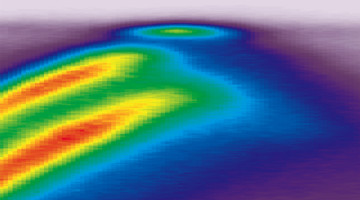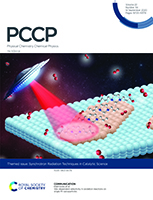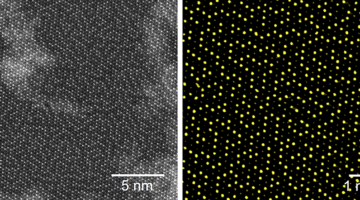Researchers showed that tiny bubbles of ordered spins (skyrmions) can be induced to form in a material previously considered incompatible with skyrmion formation. The discovery opens up a new class of material systems that exhibit technologically desirable nanoscale features attractive for spintronic applications. Read more »![]()
![]()
ALS Work Using Spectroscopy
These techniques are used to study the energies of particles that are emitted or absorbed by samples that are exposed to the light-source beam and are commonly used to determine the characteristics of chemical bonding and electron motion.
Scientists Design New Framework for Clean Water
A promising solution to water pollution from abandoned copper mines relies on materials that adsorb copper ions from wastewater, but commercially available products lack the required chemical specificity and load capacity. A team of scientists has designed a new crystalline material that targets and traps copper ions from wastewater with unprecedented precision and speed. Read more »
Increasing the Efficiency of CO Catalytic Conversion
Using a combination of tools at the ALS and other facilities, researchers probed specific mechanisms affecting the efficiency of catalysts for CO-to-CO2 conversion. The work brings us closer to the rational design of more effective catalysts for cleaning up toxic CO exhaust and advances our understanding of fundamental catalytic reactions. Read more »![]()
![]()
Detecting Phonon Overtones in Correlated Materials
Resonant inelastic x-ray scattering (RIXS) has recently been shown to be a promising technique for studying electron–phonon coupling in correlated materials. When a photoexcited electron interacts with phonons during decay, it shows up in the RIXS spectra as clear phonon overtones: higher-order excitations that appear as ripples in intensity. Read more »
Controlling Magnetization Vector Depth Profiles of La0.7Sr0.3CoO3/La0.7Sr0.3MnO3 Exchange Spring Bilayers via Interface Reconstruction
Polarized neutron reflectometry was combined with soft x-ray magnetic spectroscopy to quantify the changes in the magnetic and chemical depth profiles in La0.7Sr0.3CoO3/La0.7Sr0.3MnO3 bilayers, confirming the formation of interfacial layers with distinct magnetization and chemical density. Read more »
Understanding Electronic Structure in MXenes, One Atomic Layer at a Time
MXenes are 2D materials that can host a rich array of distinct chemical compositions that can be tuned for a broad range of applications, from energy storage to water purification. Site-specific x-ray absorption spectroscopy helped identify the unique roles of surface and subsurface transition-metal atoms in Ti-based MXenes. Read more »
A Probe of Light-Harvesting Efficiency at the Nanoscale
Using time-resolved experiments at the ALS, researchers found a way to count electrons moving back and forth across a model interface for photoelectrochemical cells. The findings provide real-time, nanoscale insight into the efficiency of nanomaterial catalysts that help turn sunlight and water into fuel through artificial photosynthesis. Read more »![]()
![]()
The Flat Band in Magic-Angle Graphene Visualized
Researchers visualized flat band structures associated with exotic electronic phases in stacked graphene layers offset from each other by a “magic angle.” The work corroborates theoretical predictions and has significant implications for phenomena of technological and fundamental interest, such as topological phases and superconductivity. Read more »![]()
![]()
Site-dependent selectivity in oxidation reactions on single Pt nanoparticles
Heterogeneous catalysis is a surface-controlled phenomenon in which different surface sites often show variations in reactivity, posing a major complication for the chemical industry. Here, site-dependent selectivity in oxidation reactions on Pt nanoparticles was identified by conducting IR nanospectroscopy measurements while using allyl-functionalized N-heterocyclic carbenes (allyl-NHCs) as probe molecules. Read more »
2D Electronics Get an Atomic Tuneup
Researchers demonstrated a promising avenue for controlling atomic ordering in semiconductor alloys by engineering frustrated interactions in a 2D transition metal dichalcogenide (TMD). The work could lead to improved semiconductor performance for next-generation electronics such as optoelectronics, thermoelectrics, and sensors. Read more »
- « Previous Page
- 1
- …
- 12
- 13
- 14
- 15
- 16
- …
- 30
- Next Page »
